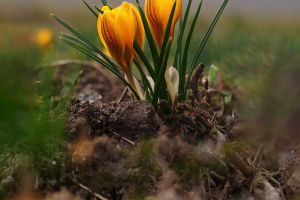In the realm of botanical beauty, few flowers captivate the senses quite like the peony.
With its lush petals unfurling in a kaleidoscope of colors and its intoxicating fragrance, the peony stands as a symbol of grace, romance, and prosperity across various cultures worldwide.
The peony’s allure extends far beyond its origins, enchanting hearts and gardens in diverse corners of the globe.
Origins and Symbolism
The peony’s journey begins in ancient Greece, where it was named after Paeon, the physician of the gods, who used the plant’s healing properties to treat wounds. In Greek mythology, it was believed that the peony was created from the tears of Paeon's student, Asclepius, the god of medicine, after he was turned into a flower by Zeus to save him from the wrath of his teacher.
Cultural Significance
In Japan, the peony, known as "botan," holds a revered status as the "king of flowers." It symbolizes prosperity, good fortune, and honor. During the Hanami festival, the Japanese tradition of cherry blossom viewing, peonies also take center stage, celebrated for their beauty and elegance.
Similarly, in Europe, particularly in Victorian England, the peony became a beloved flower, adorning gardens and grand estates. With its lush blooms and delicate fragrance, it symbolized wealth, prosperity, and romance and was often featured in bridal bouquets and elaborate floral arrangements.
Varieties and Cultivation
Peonies come in a myriad of varieties, ranging from the classic herbaceous peony to the extravagant tree peony. These flowers thrive in temperate climates and are cultivated in gardens and nurseries worldwide. From the vibrant coral hues of the 'Coral Charm' to the ethereal beauty of the 'Sarah Bernhardt,' each peony variety boasts its own unique charm and appeal.
Art and Literature
Throughout history, the peony has inspired artists, poets, and writers with its timeless beauty. In traditional Chinese brush painting, the peony is a favorite subject, symbolizing prosperity, honor, and happiness. In literature, the peony often serves as a metaphor for love, passion, and the fleeting nature of beauty, immortalized in the works of poets like Li Bai and Du Fu.
Modern Cultivation and Appreciation
In modern times, the allure of the peony continues to captivate garden enthusiasts and floral aficionados alike. With the rise of social media platforms like Instagram, peony enthusiasts share their love for these blooms through stunning photographs and heartfelt captions, fostering a global community united by their appreciation for botanical beauty.
Caring for Peonies
Cultivating peonies requires patience and care, but the rewards are well worth the effort. Plant them in well-drained soil, preferably in a sunny spot, and provide adequate water and fertilizer during the growing season. With proper care, peonies can thrive for decades, bringing joy and beauty to gardens year after year.
The peony transcends borders and cultures, enchanting hearts and gardens with its timeless beauty and symbolism. From ancient Greece to modern-day gardens around the world, the peony remains a cherished emblem of prosperity, romance, and grace. As we marvel at its lush petals and delicate fragrance, let us celebrate the enduring allure of the peony, a floral masterpiece that knows no bounds.
With its rich history, cultural significance, and universal appeal, the peony continues to inspire and enchant people of all backgrounds, serving as a reminder of the enduring power of nature to evoke wonder and beauty in our lives. Whether adorning a wedding bouquet, gracing a painting, or blooming in a backyard garden, the peony stands as a testament to the splendor of the natural world and the timeless allure of floral artistry. So let us pause and marvel at the breathtaking beauty of the peony, a floral masterpiece that transcends borders and captivates the hearts of all who behold it.


